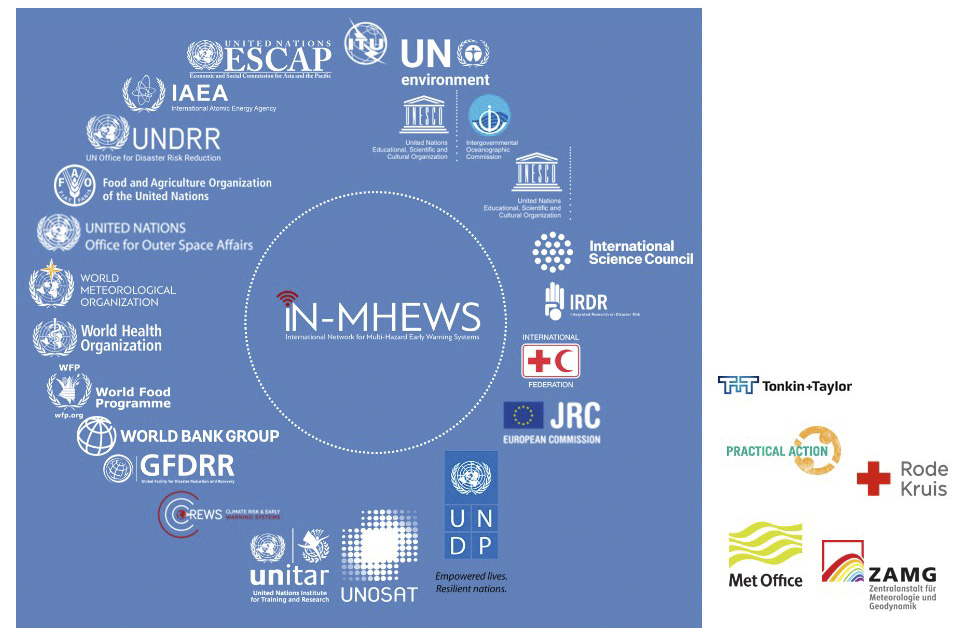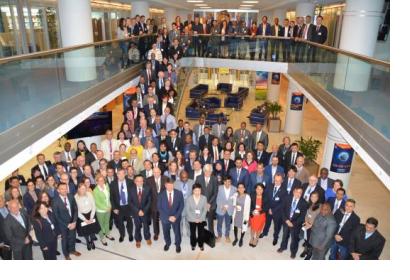Held on 13 and 14 May in Geneva, the Second Multi-Hazard Early Warning Conference (MHEWC-II) called for further strengthening of multi-hazard early warning systems (MHEWS) as part of disaster risk reduction efforts worldwide. At the event, more than 320 participants from all regions of the world and affiliated to international, regional, national and local public sector, civil society, private sector and academic institutions highlighted the need for better governance, partnerships, communication and science and technology for multi-hazard early warning efforts to translate into early action that saves lives. Establishing effective early warning systems that address intertwined hazards is becoming more urgent by the day against the backdrop of a changing climate and extreme weather events that particularly affect developing countries.
MHEWC-II, which was hosted by the World Meteorological Organization (WMO) at its headquarters in Geneva, Switzerland, was organized by 19 members of the International Network on Multi-Hazard Early Warning Systems (IN-MHEWS) as well as five partner organizations. The conference took place prior to the Global Platform for Disaster Risk Reduction 2019. UN-SPIDER co-chairs the IN-MHEWS steering committee and co-chaired the organizing committee of the conference.
In six thematic sessions and seven side events on topics, such as “Making early warning systems multi-hazard”, “Science, technology and innovation” and “Big data and space applications”, participants delivered presentations on the challenges faced in (multi-hazard) early warning; relevant projects; new applications based on satellite-derived information and other data sources; and approaches to measuring the benefits of MHEWS.

Attendees underlined the important role national governance plays in implementing and sustaining MHEWS. For MHEWS to operate effectively, legal and policy frameworks are needed that clarify roles and responsibilities of each actor and reinforce coordination and accountability. At the same time, governance mechanisms need to allow for flexibility to adapt systems to user needs adopt new technologies, address emerging hazards and learn from past experiences. Inclusive partnerships among scientists and practitioners; the public and private sectors; and humanitarian and development actors are equally important to ensure that systems are fulfilling their objectives.
Science and innovative approaches using remote sensing, big data analysis and artificial intelligence techniques, enhance monitoring and risk and impact assessments, while information and communications technologies (ICT) helps reach vulnerable populations in the “last mile”. The consistent use of data standards and established protocols, such as the Common Alerting Protocol (CAP), facilitates the delivery of earning and interoperability among systems. To ensure that countries worldwide – especially developing countries – can benefit from advanced technologies, capacity-building is key.
As much as science and technology can contribute to early warning efforts, effective communications remain key to ensuring that early action follows. In this context, participants underlined that effective early warning systems can only be designed through a participatory approach that starts with the people – their culture, local and indigenous knowledge, risks they face and the actions they could take to avoid harm. Further research into risk awareness, perception and warning is needed for designing systems in to increase the likelihood that warnings are easily understood and heeded. On this question, participants also underlined the relevance of strengthening the “early warning, early action” chain by including both an estimate of the impact of a disaster and guidance on response measures for more focused action on the ground. Overall, the objective is to provide “useful, usable and used” warnings, delivered through redundant communication channels that people use every day.

